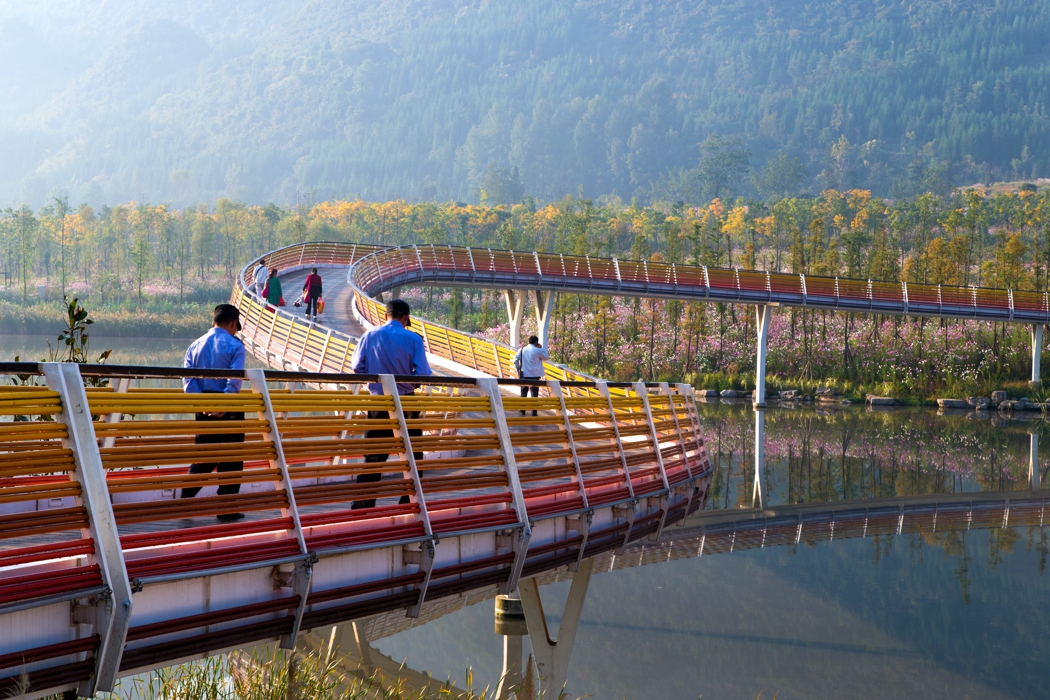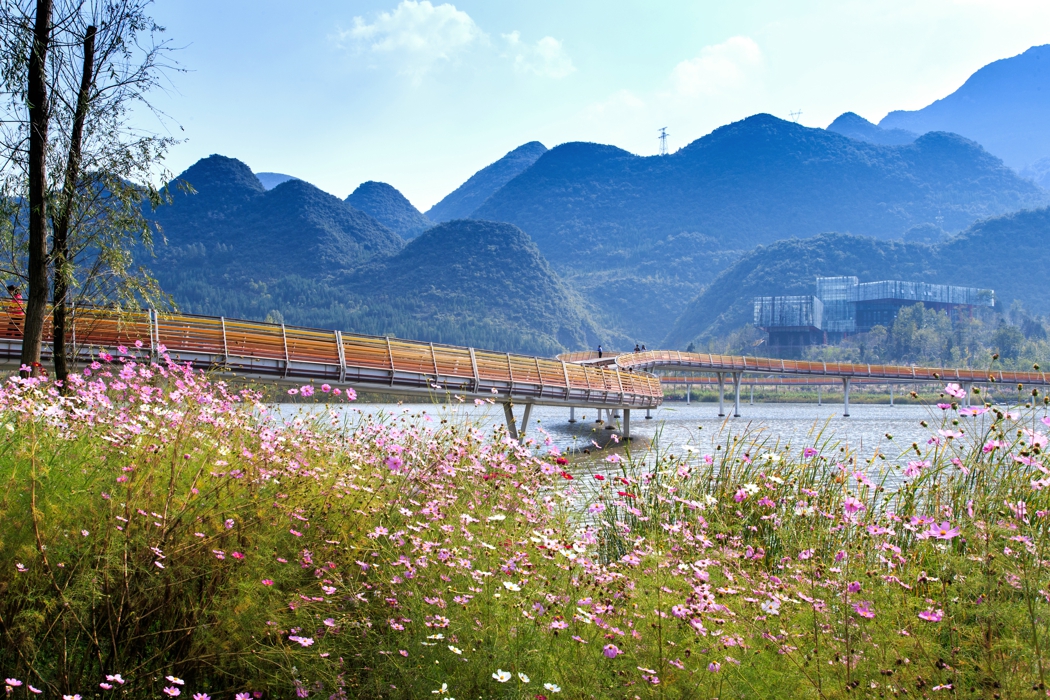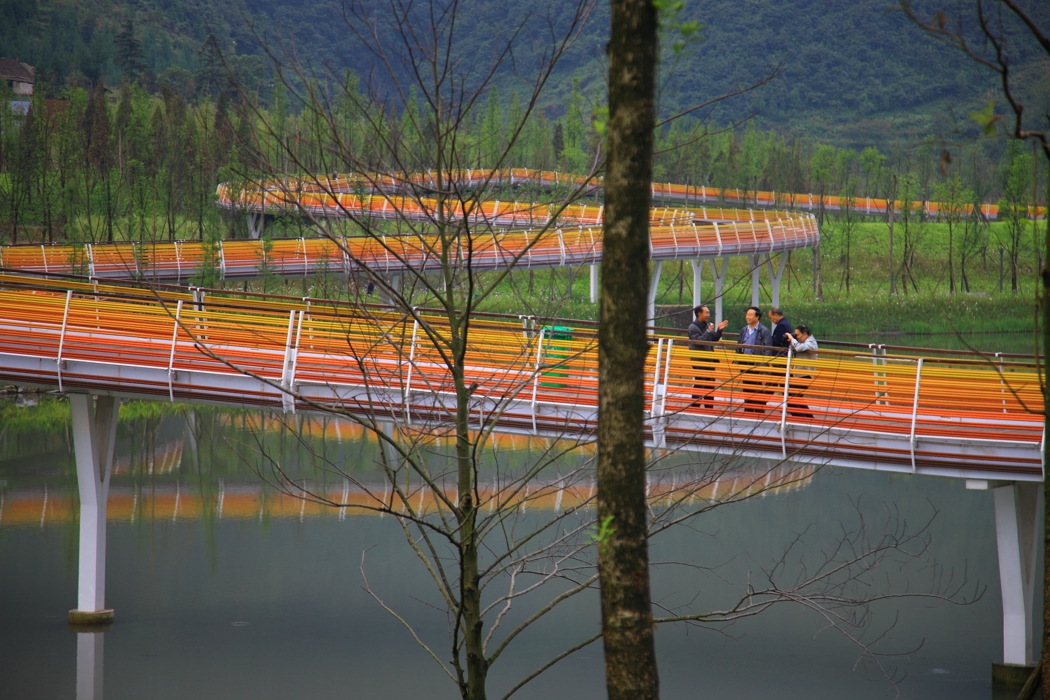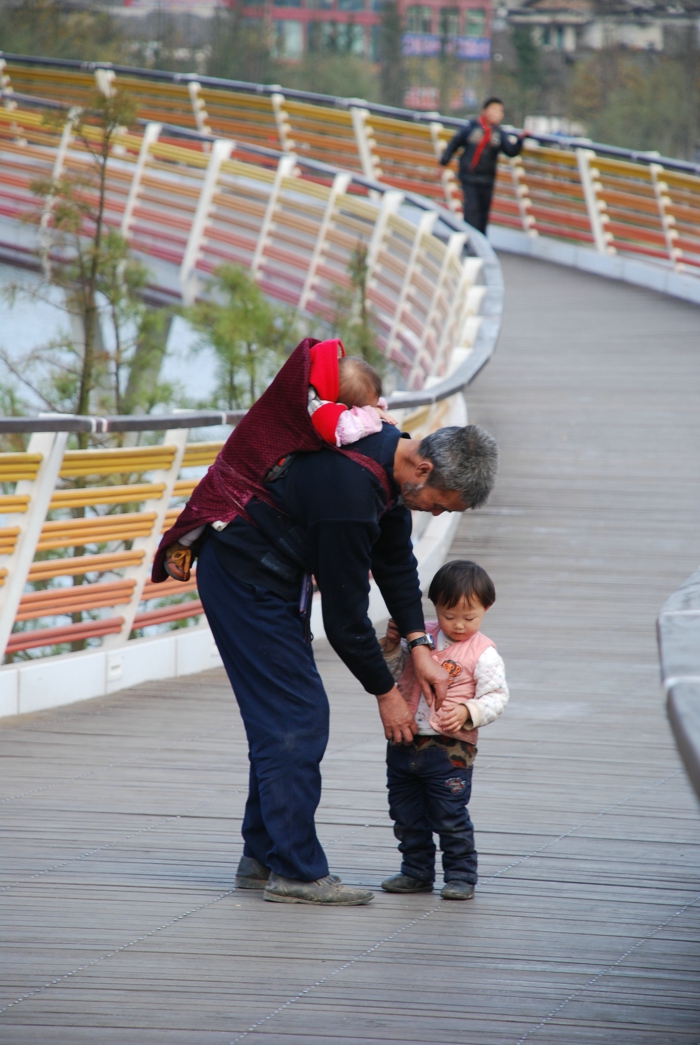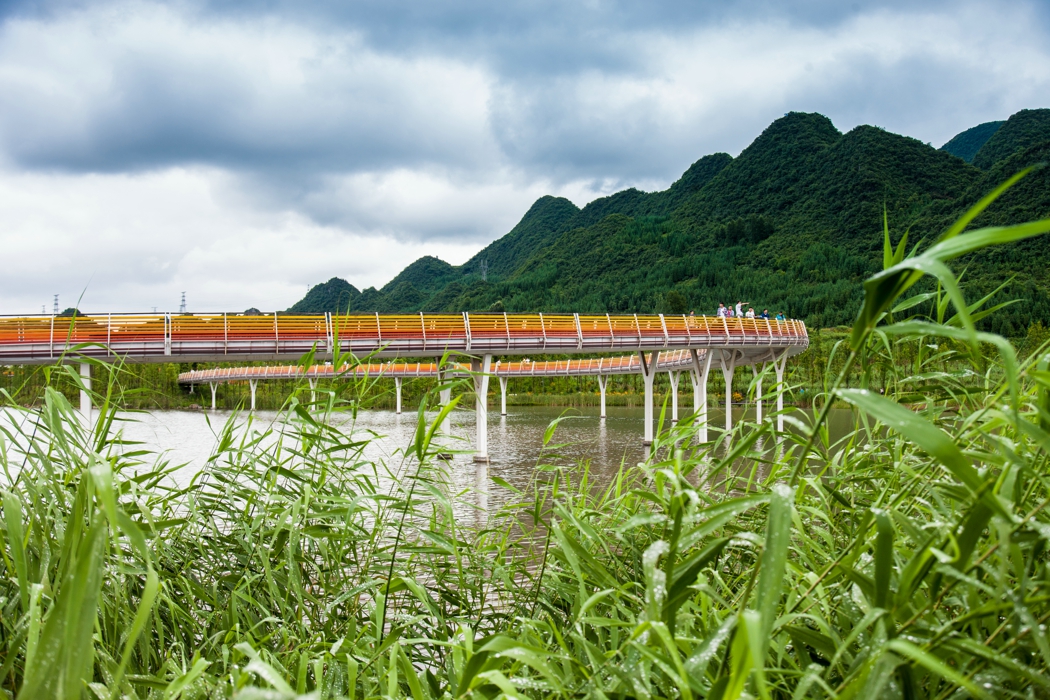Liupanshui Minghu Wetland Park Feihong Bridge
Project Information
- Project Location:
- China Liupanshui, Guizhou
- Project Scale:
- 1113m
- Design Time:
- September 2009
- Build Time:
- August 2012
- Award List:
- 2015 Humanitarian Water and Food Award, 2014 ASLA Honor Award
- Related Papers
Project Profile
Liupanshui is located in western Guizhou, at the heart of the Yunnan-Guizhou Plateau. Established in the mid-1960s as an industrial city, it is densely populated, with around 600,000 residents living within a compact urban area of 60 km². The city is known for its cool highland climate and is surrounded by karst limestone hills. The Shuicheng River (also known as Xiangshui River) flows through the city, originating from Yaoshang in Zhongshan District, stretching 26.5 kilometers. It belongs to the Sancha River system, a tributary of the Wu River, which is itself a major tributary of the upper Yangtze River.
To ensure sufficient water supply for the entire watershed, the designers transformed the heavily trafficked space into a corridor suspended above the water. The bridge’s superstructure consists of a steel frame beam with an exterior coated in white fluorocarbon paint. The piers are Y-shaped steel columns. The deck is paved with anti-corrosion wood planks supported by galvanized steel pipe joists. The railings are made of 30mm-thick custom flat steel bars combined with 35mm-diameter horizontal steel pipes, with a total height of 1050mm and topped with anti-corrosion wooden handrails. For lighting, wall-mounted side lamps are installed beneath the railing beam at 1.5-meter intervals to ensure functional illumination.
The construction of the "Rainbow Bridge" offers a moment of calm in the midst of the city's fast-paced life—like the slow, gentle flow of water in the wetland—allowing people to rediscover the serenity and beauty of this land. Embraced by the surrounding karst mountains, the bridge serves as a cultural route that enables people to experience, interpret, and reconnect with the region’s vernacular cultural landscape. It is not only the organizational core of the wetland landscape but also a symbolic landmark of the local “steel city.”
